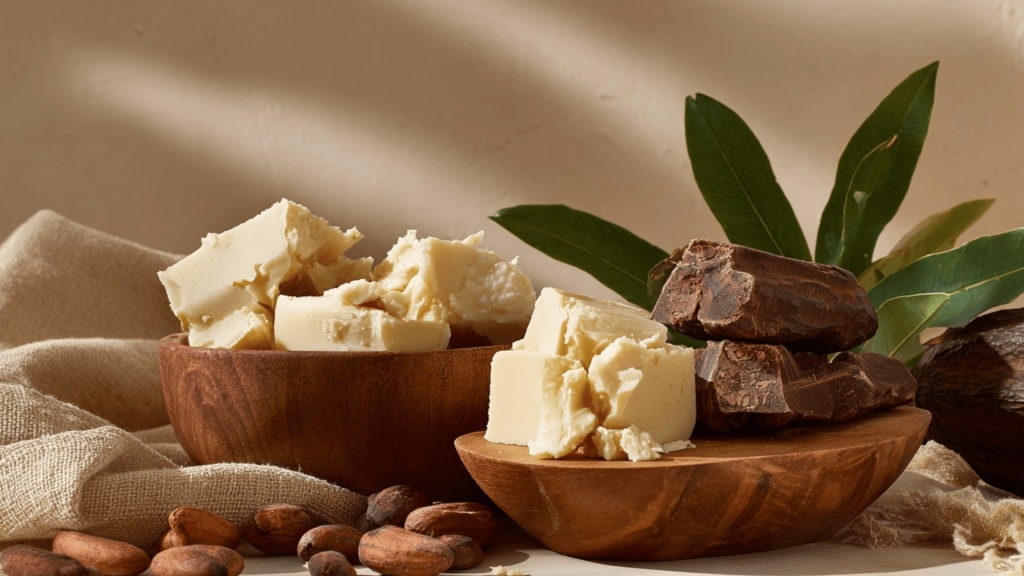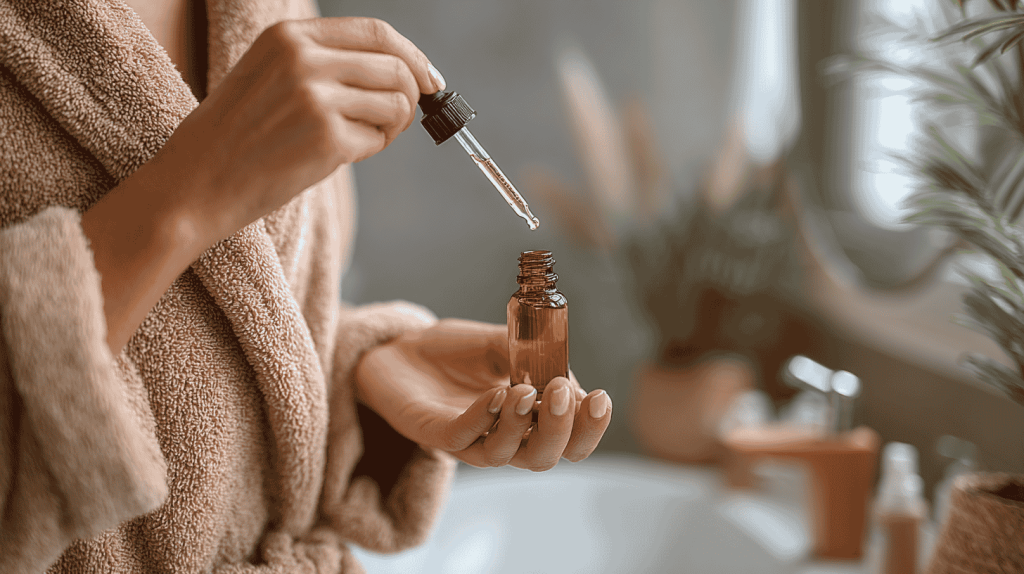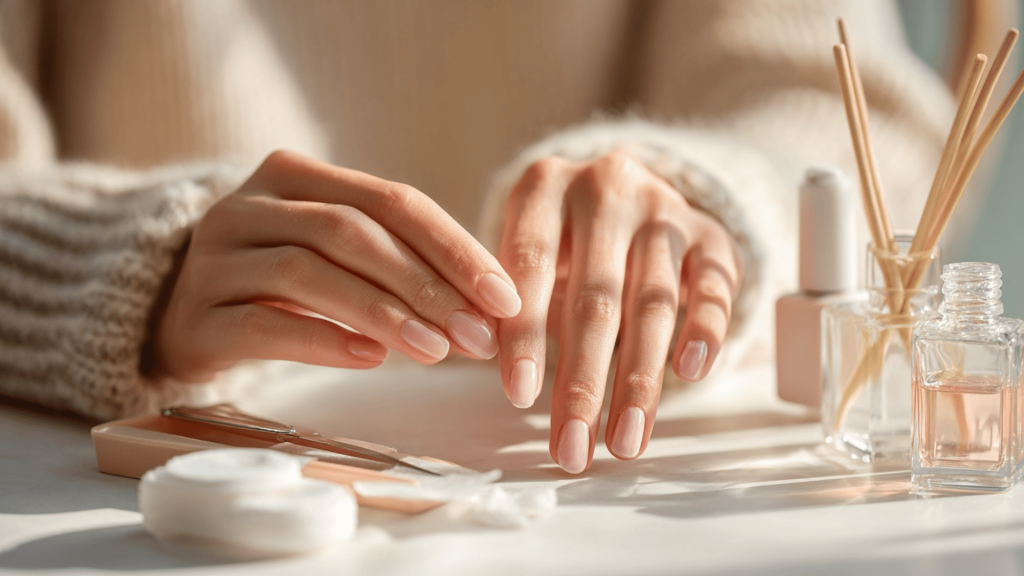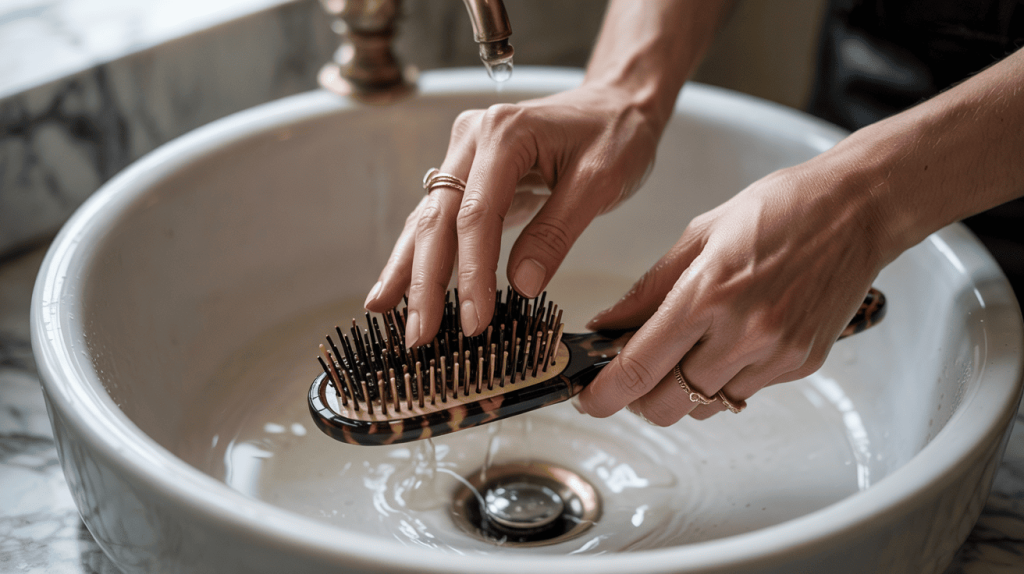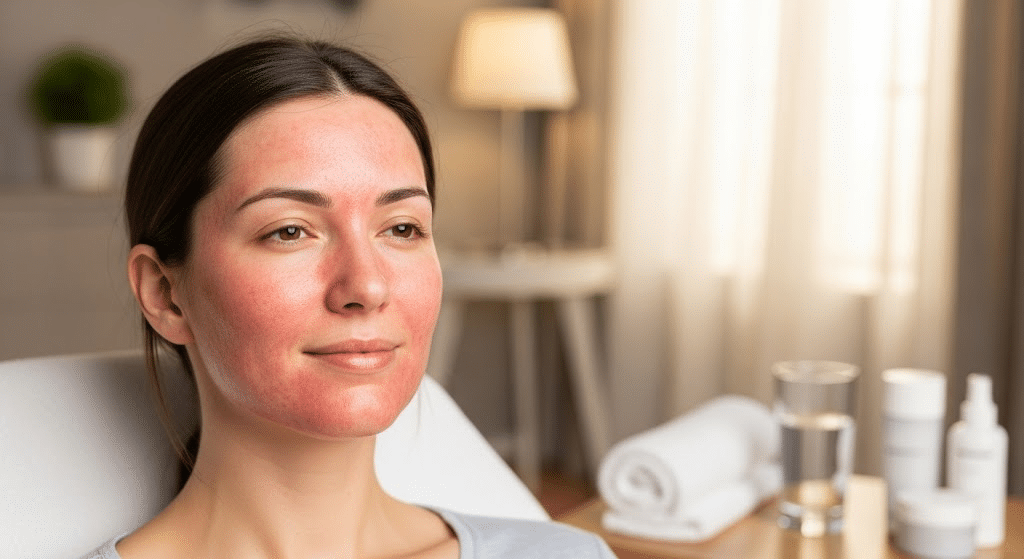The natural skincare world is filled with nourishing options, and two of the most popular are shea butter and cocoa butter.
Both are known for their rich textures and moisturizing abilities, but they offer different benefits depending on your skin’s needs.
Shea butter is soft, soothing, and easily absorbed, while cocoa butter is thicker and provides deep, lasting hydration.
Understanding their unique qualities helps you decide which one suits your skin type and concerns best.
Each has its own feel, scent, and skincare benefits that can help keep your skin smooth, healthy, and naturally radiant every day.
What Are Shea and Cocoa Butter?
Shea butter is derived from the nuts of the African shea tree (Vitellaria paradoxa). Used for centuries across West Africa, it’s prized for healing dry skin, soothing inflammation, and promoting skin repair.
The butter is extracted by crushing and grinding the nuts to release rich oils packed with vitamins A, E, and F, plus essential fatty acids that deeply nourish and protect the skin.
Cocoa butter, meanwhile, comes from roasted cacao beans, the same source as chocolate.
After pressing the beans, the extracted fat becomes a smooth, aromatic butter rich in stearic, palmitic, and oleic acids, along with polyphenols and vitamin E, providing lasting hydration and antioxidant defense.
Properties of these butters
The physical properties of these butters affect how they feel and perform on your skin.
| Property | Shea Butter | Cocoa Butter |
|---|---|---|
| Texture | Soft, creamy, melts quickly | Firm, solid, melts on skin contact |
| Aroma | Mild, nutty | Chocolate-like |
| Absorption | Fast, non-greasy | Slow forms a protective barrier |
| Shelf Life | Moderate (12-24 months) | Long (2-5 years) |
| Comedogenic Rating | Low (1–2) | Higher (3–4) |
The higher comedogenic rating makes it more likely to cause breakouts in people with oily or acne-prone skin.
What They Do for Your Skin
These natural butters deeply moisturize, protect, and repair the skin while improving its overall texture and health.
1. Benefits of Shea Butter
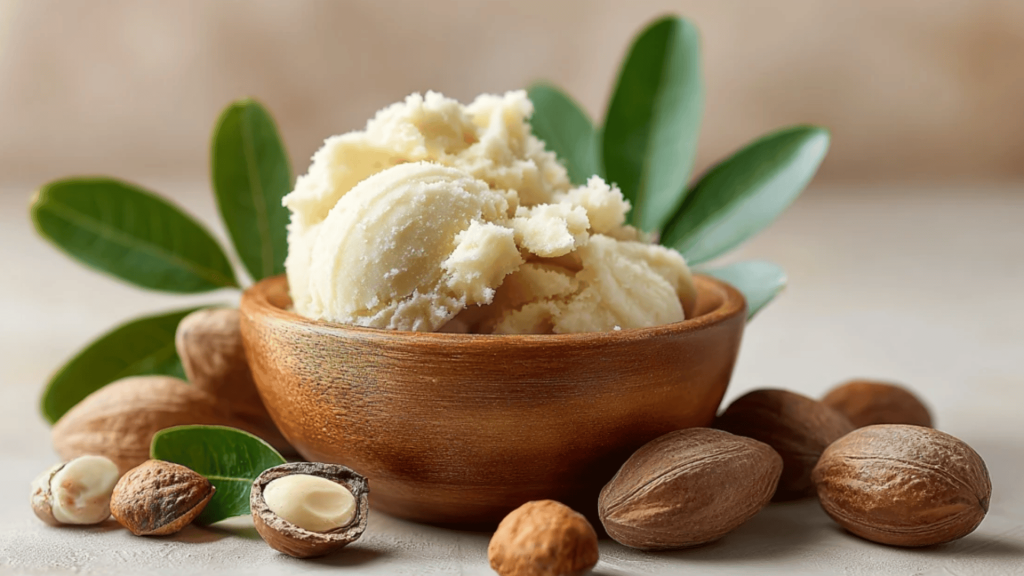
It deeply nourishes and protects skin, offering gentle yet powerful hydration suitable for everyday skincare routines.
- Deep Moisturization – Fatty acids penetrate deeply to hydrate without leaving a heavy or greasy feel.
- Anti-Inflammatory Properties – Calms irritated skin, helping with eczema, psoriasis, and dermatitis while reducing redness and swelling.
- Healing Support – Forms a protective layer on cuts or scars, and vitamins A and E promote skin repair.
- Suitable for Sensitive Skin – Gentle, non-irritating, and ideal for those with allergies or easily reactive skin.
- Improves Elasticity – Regular use maintains softness and flexibility, reducing fine lines over time.
Consistent use improves skin health, elasticity, and radiance, making it a trusted natural moisturizer for all skin types.
2. Benefits of Cocoa Butter
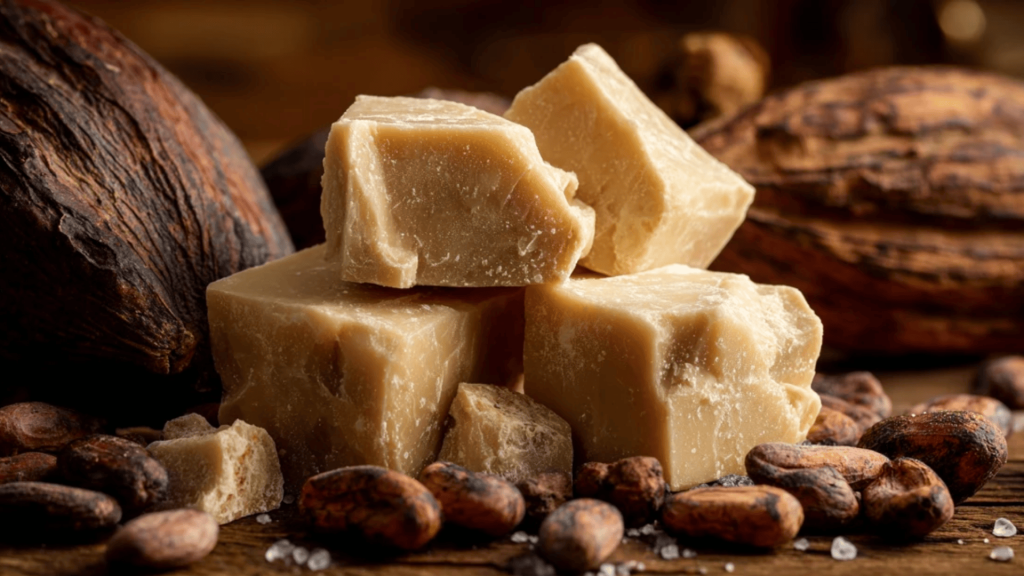
Cocoa butter provides rich nourishment and long-lasting moisture, making it especially effective for dry skin and targeted skincare concerns.
- Intense Hydration – Its thick texture locks in moisture for hours, ideal for rough areas like elbows and heels.
- Stretch Mark Support – Keeps skin supple during pregnancy or weight changes, helping minimize the look of stretch marks.
- Antioxidant Protection – Polyphenols defend against free radicals, preventing premature aging and dullness.
- Barrier Function – Creates a protective layer that seals in hydration and shields skin in cold or dry climates.
- Natural Glow – Regular use smooths skin texture and enhances a healthy, radiant appearance.
With its rich texture and protective qualities, cocoa butter is a perfect choice for deeply moisturizing and revitalizing dry, stressed skin.
Drawbacks of Shea and Cocoa Butter
Both shea and cocoa butter have a few downsides despite their many benefits.
Shea butter can feel greasy when overused, especially on oily or combination skin. Its natural nutty scent may be too strong for some, while refined versions lose nutrients.
It also provides limited barrier protection in harsh winter climates.
Cocoa butter is thicker and may clog pores for acne-prone skin. Its sweet chocolate smell can be overpowering, particularly for facial use.
In colder temperatures, it becomes hard and needs to be warmed before application. Knowing these limitations helps you choose and use each butter more effectively.
How to Choose the Right Butter for Your Skin Type
Your skin type determines which butter will work best for you. Choose unrefined, organic versions when possible, as they contain more beneficial nutrients than heavily processed options.
| Skin Type | Recommended Butter | Reason |
|---|---|---|
| Dry / Dehydrated | Cocoa Butter | Strong moisture barrier prevents water loss |
| Oily / Acne-Prone | Shea Butter | Non-comedogenic absorbs easily without clogging |
| Sensitive Skin | Shea Butter | Gentle, calming properties reduce irritation |
| Mature Skin | Cocoa Butter | Antioxidants fight aging while firming skin texture |
| Combination | Blend of Both | Balanced hydration without excess oil or dryness |
Before using any new product, do a patch test. Apply a small amount to your inner forearm and wait 24 hours to check for reactions.
How to Use in Your Routine
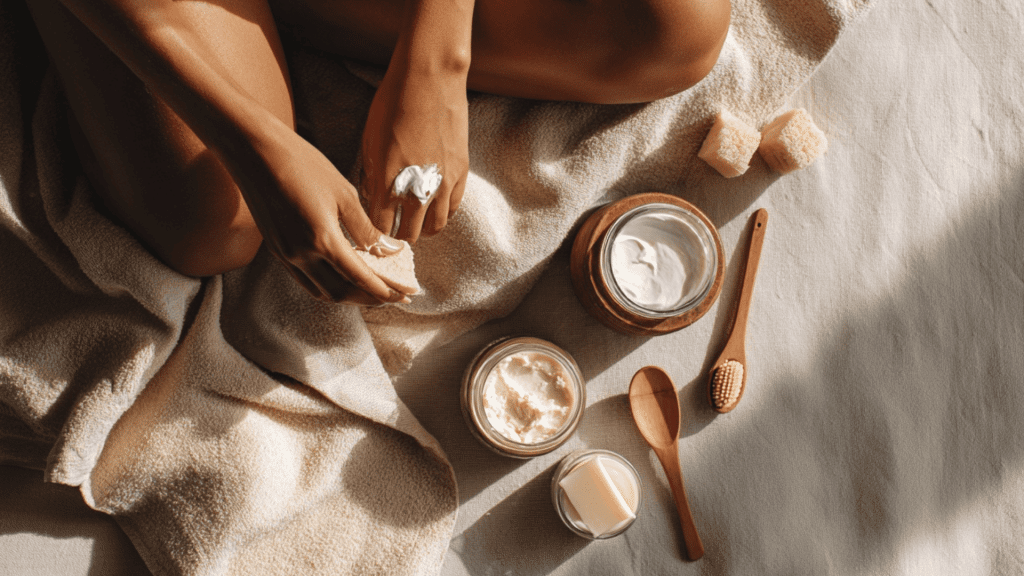
Shea and cocoa butter deeply nourish, hydrate, and protect skin and hair, making them essential additions to your daily routine.
- Face application – Apply a small amount of shea butter to dry areas at night. Avoid using cocoa butter on your face if you have oily or acne-prone skin.
- Body moisturizing – Massage cocoa butter onto damp skin right after showering to seal in moisture. Use shea butter for daily hydration on normal to dry skin.
- Hair treatment – Mix either butter with coconut oil or jojoba oil for a deep conditioning mask. Leave on for 30 minutes before shampooing.
- Lip care – Rub a tiny amount of raw shea or cocoa butter directly on lips as needed throughout the day.
- DIY blends – Whip equal parts of both butters with a hand mixer to create a lighter texture that combines their benefits.
Blend or use individually, shea and cocoa butter deliver lasting moisture, softness, and natural glow for healthy, radiant skin and hair.
Top Shea and Cocoa Butter Products
Check tothe p-rated shea and cocoa butter products of 2025 that deliver deep hydration, nourishment, and lasting skin softness.
- The Body Shop Shea Butter: Ethically sourced and fair trade formula that absorbs quickly without leaving residue.
- SheaMoisture Raw Shea Butter: Pure, unrefined butter packed with nutrients to treat severely dry or rough skin.
- L’Occitane Shea Butter Ultra Rich Cream: A grand 25% shea formula that feels silky, smooth, and non-greasy.
- Palmer’s Cocoa Butter Formula Lotion: A trusted classic with vitamin E for daily moisture and stretch mark care.
- Nivea Cocoa Butter Body Cream: Lightweight, fast-absorbing texture ideal for everyday hydration and softness.
- Vaseline Intensive Care Cocoa Radiant Lotion: Blends cocoa and shea butter for balanced, long-lasting nourishment.
These standout products combine quality, comfort, and care, leaving your skin soft, healthy, and beautifully moisturized every day.
Shea Butter vs Cocoa Butter vs Mango Butter
Mango butter offers a third option worth considering. Extracted from mango seed kernels, this butter provides lightweight moisturization without heaviness.
| Feature | Shea | Cocoa | Mango |
|---|---|---|---|
| Texture | Creamy | Firm | Light & silky |
| Aroma | Nutty | Chocolate | Mild/fruity |
| Absorption | Medium-fast | Slow | Fast |
| Ideal For | Sensitive skin | Dry & mature skin | Oily or hot climates |
Mango butter works particularly well for people who live in humid areas or have skin that clogs easily.
It provides good moisture without the weight of cocoa butter or the occasional greasiness of shea butter. The mild scent also appeals to people who prefer unscented products.
Final Thoughts
Each of these natural butters brings something different to skincare. Shea butter offers healing and versatility that works for most skin types.
Cocoa butter provides protective richness that benefits very dry or mature skin. Mango butter delivers light, fast-absorbing moisture for people who need less intensive hydration.
You don’t have to choose just one. Many people keep different butters for different purposes or blend them to create custom formulations.
Start with the recommendation for your skin type, then experiment to find what makes your skin feel its best.
Choose your butter based on your specific skin concerns, climate, and personal preferences. Your skin will thank you for the natural nourishment.

